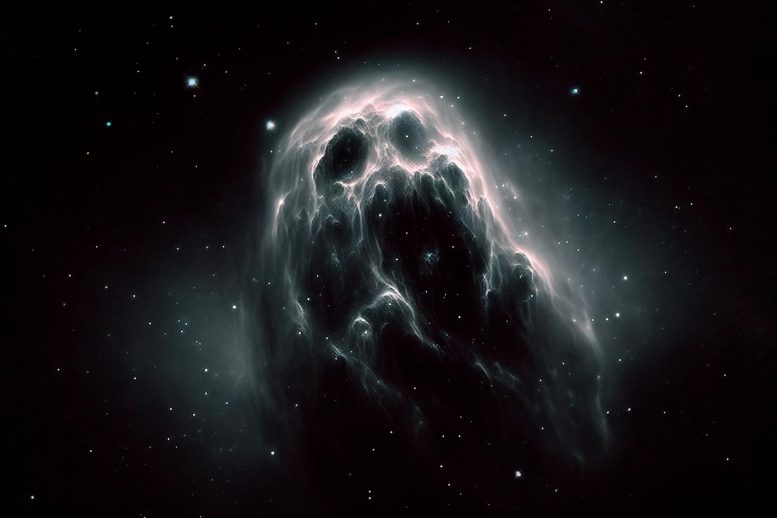
Good morning. It's December 5, and today's photo takes us very far from home to a dusty star factory of a galaxy that we need every bit of the James Webb Space Telescope's power to resolve.
This is the object AzTECC71, and astronomers say we are observing the galaxy as it existed just 900 million years after the Big Bang. And since the Universe is 13.7 billion years old, that is light from a long time ago in a galaxy far, far away.
What is special about this object is that we have not seen very many galaxies such as this one, shrouded as it is by dust. That precludes observation by optical instruments, including the Hubble Space Telescope. Whereas astronomers once thought this kind of dusty galaxy was rare, they now believe they are fairly common, and they just haven't been able to see them before.
This object first appeared as a blob in ground-based telescopes that can observe in the infrared portion of the spectrum. Due to light scattering by the dust, it was not visible when Hubble looked for it, however. But thanks to the Webb telescope, astronomers now have a better view of the distant, dusty galaxy.
"This thing is a real monster," said Jed McKinney, a postdoctoral researcher at The University of Texas at Austin involved in the observations. "Even though it looks like a little blob, it’s actually forming hundreds of new stars every year. And the fact that even something that extreme is barely visible in the most sensitive imaging from our newest telescope is so exciting to me. It’s potentially telling us there’s a whole population of galaxies that have been hiding from us."
See you tomorrow with a celestial treat closer to home. It almost has to be, right?
Source: J. McKinney/M. Franco/C. Casey/The University of Texas at Austin.



3175x175(CURRENT).thumb.jpg.b05acc060982b36f5891ba728e6d953c.jpg)
Recommended Comments
There are no comments to display.
Join the conversation
You can post now and register later. If you have an account, sign in now to post with your account.
Note: Your post will require moderator approval before it will be visible.